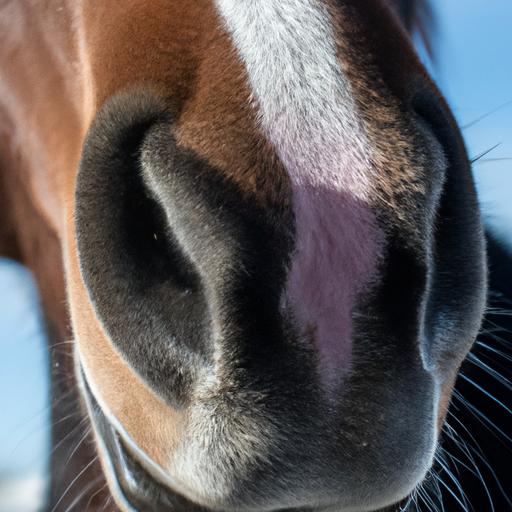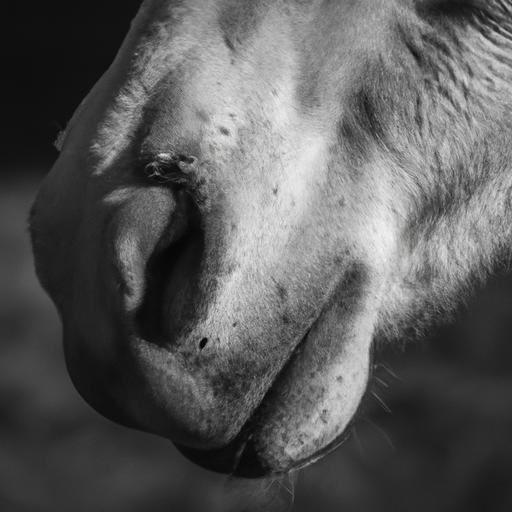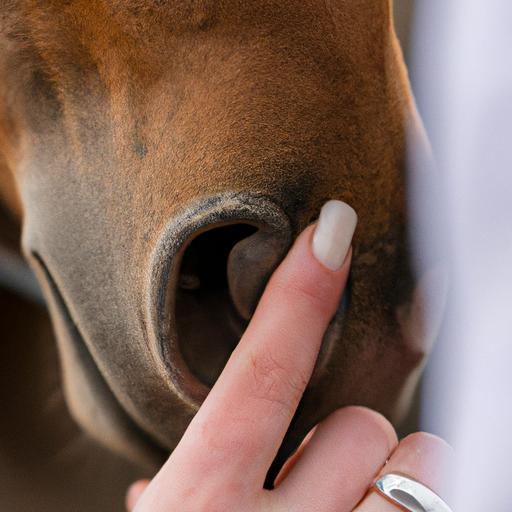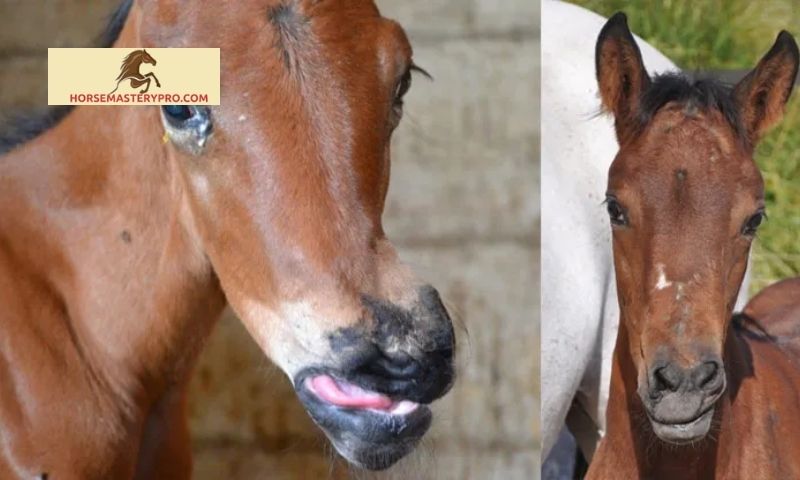Discover the causes, symptoms, diagnosis, and management of wry nose in horses. Learn how to provide optimal care for your equine companion.
When it comes to our beloved horses, their health and well-being are of utmost importance. As responsible horse owners and handlers, we strive to stay informed about various conditions that may affect our equine companions. One such condition that requires our attention and understanding is wry nose in horses. In this article, we will delve into the intricacies of this unique condition, explore its causes, symptoms, treatment options, and management techniques.
What is Wry Nose in Horses?
Wry nose, also known as deviated nasal septum, is a congenital or acquired deformity that affects the nasal structure of horses. It is characterized by a deviation or twisting of the nasal bones or cartilage, resulting in an abnormal appearance of the horse’s nose. This condition can vary in severity, from subtle deviations to more pronounced deformities that may affect the horse’s breathing and overall well-being.
Understanding the Importance
As horse owners and handlers, it is crucial to familiarize ourselves with wry nose and its implications. By gaining a deeper understanding of this condition, we can provide the best possible care for our horses and take appropriate measures to manage their health. Whether you are a seasoned equestrian or a newcomer to the world of horses, knowing how to recognize, diagnose, and address wry nose will empower you to make informed decisions and seek timely veterinary intervention, if necessary.
What to Expect in This Article
In the sections that follow, we will explore the causes behind wry nose in horses, including genetic factors, developmental abnormalities, and traumatic injuries. We will discuss the various symptoms of wry nose, aiding in its early identification. Additionally, we will delve into the diagnostic methods employed by veterinarians to confirm the presence of wry nose in horses. The article will cover an array of treatment options, ranging from non-surgical approaches to surgical interventions, along with postoperative care and recovery.
Join me on this insightful journey as we navigate the world of wry nose in horses together. By the end of this article, you will be equipped with the knowledge and strategies necessary to manage this condition effectively. Remember, our horses depend on us for their well-being, and understanding wry nose is an essential step towards providing them with the care they deserve.
Stay tuned for the upcoming sections, where we will explore the causes, symptoms, and diagnostic methods related to wry nose in horses. Together, let’s unravel the mysteries of this condition and learn how to best support our equine friends.
Continue reading: Causes of Wry Nose in Horses
Causes of Wry Nose in Horses

Wry nose in horses can stem from various causes, including genetic factors, developmental abnormalities, and traumatic injuries. Understanding these underlying causes is crucial in comprehending the origin of this condition and implementing appropriate management strategies. Let’s delve deeper into each of these factors.
Genetic Factors and Hereditary Predisposition
Genetics play a significant role in the occurrence of wry nose in horses. Certain breeds may have a higher predisposition to develop this condition due to inherited traits. Breeding horses with a history of wry nose increases the likelihood of passing on the genetic predisposition to their offspring. As responsible breeders, it is essential to be aware of the potential genetic risks associated with wry nose and make informed decisions to minimize its prevalence.
Developmental Abnormalities during Fetal Development
Wry nose can also arise from developmental abnormalities that occur during fetal development. Factors such as improper growth of the nasal cartilage or bones can lead to a deviation or twisting of the nasal structure. These abnormalities may be influenced by various environmental and genetic factors. It is important to note that not all cases of wry nose are hereditary; some may result from unique developmental issues during gestation.
Traumatic Injuries or Accidents Affecting Nasal Bones or Cartilage
In some cases, wry nose can be a consequence of traumatic injuries or accidents that impact the nasal bones or cartilage. These injuries can occur during foaling, when the fragile nasal structure is vulnerable. Accidents, such as collisions or falls, can also result in nasal deformities. It is vital to take precautions to minimize the risk of such injuries, ensuring the safety and well-being of our horses.
By understanding the causes behind wry nose in horses, we can better comprehend the factors contributing to this condition’s occurrence. Join me in the upcoming sections as we explore the symptoms and diagnostic methods used to identify wry nose in horses. Together, we will expand our knowledge and equip ourselves with the tools needed to provide optimal care for our equine companions.
Continue reading: Symptoms and Diagnostic Methods
Symptoms and Diagnostic Methods

Recognizing Wry Nose in Horses
When it comes to identifying wry nose in horses, being able to recognize the physical signs and visual cues is crucial. While each case may vary in severity, there are common indicators to watch out for. Physical signs often include a visible twist or deviation in the nasal bones or cartilage, resulting in an asymmetrical appearance of the horse’s nose. Additionally, the nostrils may appear uneven or misaligned. Observing these physical abnormalities can help in early detection and intervention.
Furthermore, it is essential to be aware of the potential difficulties that horses with wry nose may experience. Due to the nasal deformity, affected horses may encounter challenges in their breathing or eating patterns. Observe any signs of increased respiratory effort, such as audible breathing sounds, flared nostrils, or labored breathing. In some cases, horses may exhibit difficulties in eating, leading to weight loss or decreased appetite. Paying close attention to these symptoms can aid in prompt diagnosis and appropriate care.
Diagnostic Methods for Wry Nose
When faced with suspected wry nose in horses, veterinary professionals employ various examination techniques to confirm the diagnosis. These methods are designed to assess the extent of the nasal deformity and provide insights for developing an effective treatment plan. Among the commonly used diagnostic methods is a thorough physical examination, which includes palpating the nasal region for abnormalities and observing any associated respiratory distress.
Additionally, veterinarians may utilize imaging techniques, such as radiographs or CT scans, to gain a more detailed understanding of the nasal structures. These imaging modalities allow for a comprehensive assessment of the nasal bones, cartilage, and overall alignment. By combining physical examination findings with imaging results, veterinarians can accurately diagnose wry nose and tailor the treatment approach accordingly.
In the next section, we will delve into the various treatment options available for horses with wry nose. From non-surgical approaches to surgical interventions, we will explore the strategies employed to address the nasal deformities and improve the horse’s quality of life.
Continue reading: Treatment Options for Wry Nose in Horses
Management and Care for Horses with Wry Nose

When it comes to horses with wry nose, proactive management and thoughtful care are essential to ensure their well-being. By implementing certain strategies and making necessary adjustments, we can provide a comfortable and supportive environment for these special equines. In this section, we will explore the key aspects of managing and caring for horses with wry nose.
Regular Monitoring and Observation
Regular monitoring and observation of horses with wry nose is crucial in order to detect any changes in their condition and address any potential issues promptly. By keeping a close eye on your horse’s well-being, you can identify any signs of discomfort, breathing difficulties, or eating challenges. Pay attention to their overall behavior, appetite, and respiratory patterns. If you notice any significant changes, it is recommended to consult with a veterinarian who specializes in equine health.
Nutritional Considerations
Proper nutrition plays a vital role in supporting the health and well-being of horses with wry nose. It is essential to provide a balanced diet that meets their specific nutritional needs. Consult with a qualified equine nutritionist or veterinarian to develop a feeding plan tailored to your horse’s individual requirements. Consider the texture and consistency of the feed, as some horses with wry nose may benefit from softer or more easily chewed food. Regular dental check-ups are also important to ensure proper mastication and digestion.
Proper Housing and Environmental Adjustments
Creating an appropriate living environment for horses with wry nose is crucial to their comfort and overall quality of life. Ensure that their stable or pasture provides ample space for movement and access to fresh air. Avoid overcrowding, as it can increase the risk of accidents or injuries. Additionally, consider making any necessary adjustments to the environment to minimize potential triggers or irritants that may affect the horse’s respiratory system. Providing a clean and well-ventilated area can greatly contribute to their overall well-being.
In conclusion, managing and caring for horses with wry nose requires vigilance, attention to detail, and a proactive approach. Regular monitoring, tailored nutrition, and a suitable living environment are key factors in supporting these horses and ensuring their comfort. By implementing these strategies, we can enhance their quality of life and provide them with the care they deserve.
Continue reading: Preventive Measures for Wry Nose in Horses


